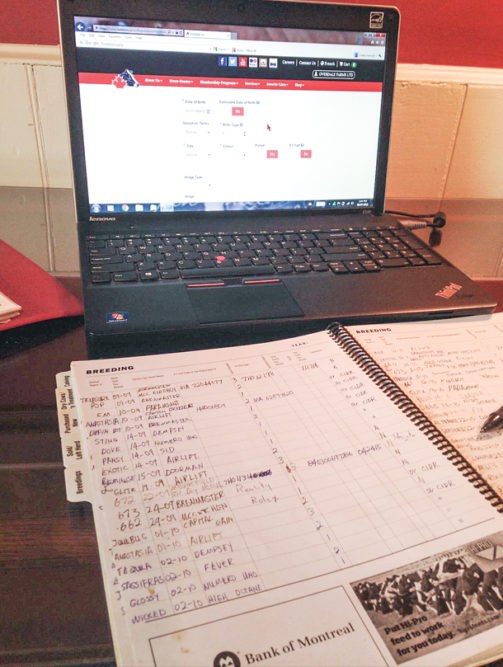While perhaps not all of the available data will prove to be a good fit for use in current breed improvement programs, a great deal of it may complement or enhance data presently collected periodically from the farm, for both breed improvement and management purposes.
Investigation into these alternative data collection methods is vital to the future relativeness of breed improvement services to the modern producer. In response to a resolution presented by members a few years ago at the Holstein Canada Annual General Meeting, the association initiated a two-year “fact-finding” project in the summer of 2015, including hiring an employee to investigate on-farm data collection.
The overall goal of the project was to increase the understanding of current on-farm practices that involve the use of technology for data collection. Use of this information will help establish more direct connections with on-farm data collection systems to address the ever-changing needs of dairy farmers in this fast-paced world.
Although the main emphasis of the project was placed on how to improve data flow for the association’s services (i.e., registration), the investment was made on behalf of the industry, stating results from phase one, the investigation phase, would be shared with all concerned.
The new generation of dairy farmers is far less interested in paper reports and manual data entry; they want to have the option to view and input herd information on their smartphones and have data sent directly from their farm computers to their herd advisers.
Feedback received from members from across Canada was extremely helpful in guiding the data project on to the next phase. A variety of farmers were consulted and highlighted the need for more efficient data exchange within the dairy industry – specifically from farm to industry partners. For instance, farmers traditionally submitted registrations via hard copy forms sent to the head office for entry into the herdbook.
As times changed and technology became more readily available on the farm, registrations were accepted in two different electronic methods, first the Electronic Registration Application (ERA) file, followed by Internet submission via customer web accounts.
This allowed the association to reach 91 percent of registrations being received electronically, with the new herdbook being returned electronically as of this fall.
Since all of these methods are available today, now the question is: What’s the next option? Many dairy farmers now use herd management software programs on their farm to track all individual animal and herd data.
These programs provide huge value by allowing the farmer to keep accurate herd records. However, since no two farms are the same, many different software programs are used on dairies across the country. While certain programs are capable of exchanging limited data with the herdbook, there is a large opportunity for improvement in this area.
The goal is to create the next option for transferring data from the farm to the breed association to reduce duplicate entry of data, increase frequency of data collection and require less overall input from the farmer.
Another issue to consider when discussing dairy industry data flow is the sheer amount of data now being collected daily on each individual cow and at every milking event on many farms across the country.
Robotic systems are becoming more and more popular in today’s dairy industry and are capable of producing massive volumes of valuable data that could be used for breed improvement services; however, at this time much of it never leaves the farm.
These farms are highly automated and collect many data points on each milking event; however, test-day data is still collected and used instead at many of these farms that choose to continue to participate in milk recording services.
Further investigation of the potential applications of this data is required to fully understand the possible benefits of collecting this information. How much additional data is necessary for breed improvement programs? At what point does extra data become redundant?
These are some of the questions industry partners are committed to answering as soon as possible in order to make better use of on-farm data in the future. Today’s dairy farmers have more technology available to them than ever before.
As a result, higher importance is being placed on the efficiency and overall economic value of breed improvement services in their toolbox when determining which tools to continue using.
With this trend comes great incentive for dairy industry partners that support farmers in their day-to-day herd management decisions to show increased value of the services offered.
Holstein Canada is working closely with CanWest DHI, Valacta and CDN on phase two of the data exchange project – to identify cost-effective and efficient solutions to a fairly complex issue. With dairy farmer determination, we will continue to strive for concrete results. ![]()
PHOTO: A two-year data exchange project is considering how on-farm herd data could be further utilized by breed improvement programs. Photo provided by Holstein Canada.

-
Morgan Overvest
- On-Farm Data Exchange
- Project Coordinator
- Holstein Canada
- Email Morgan Overvest









